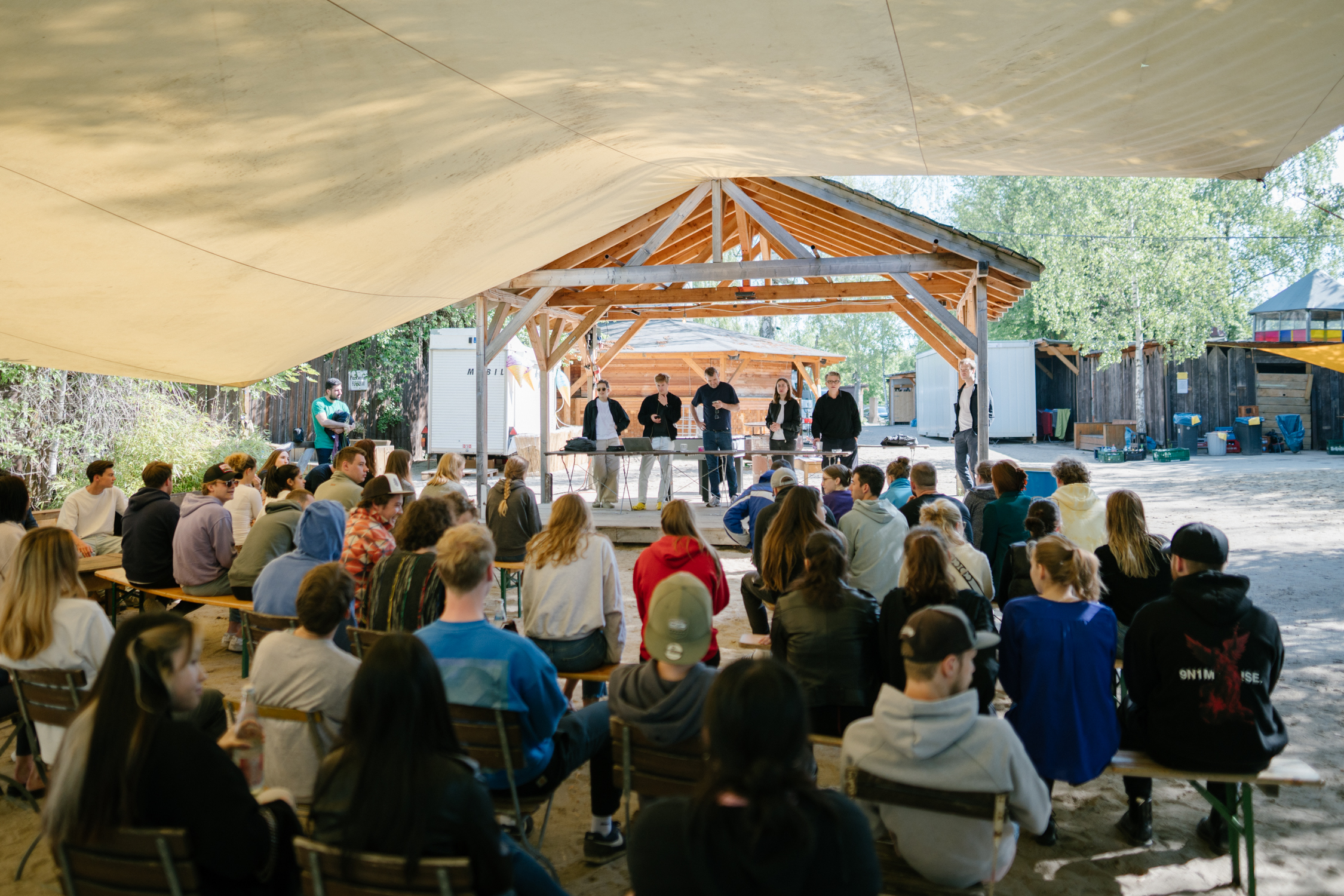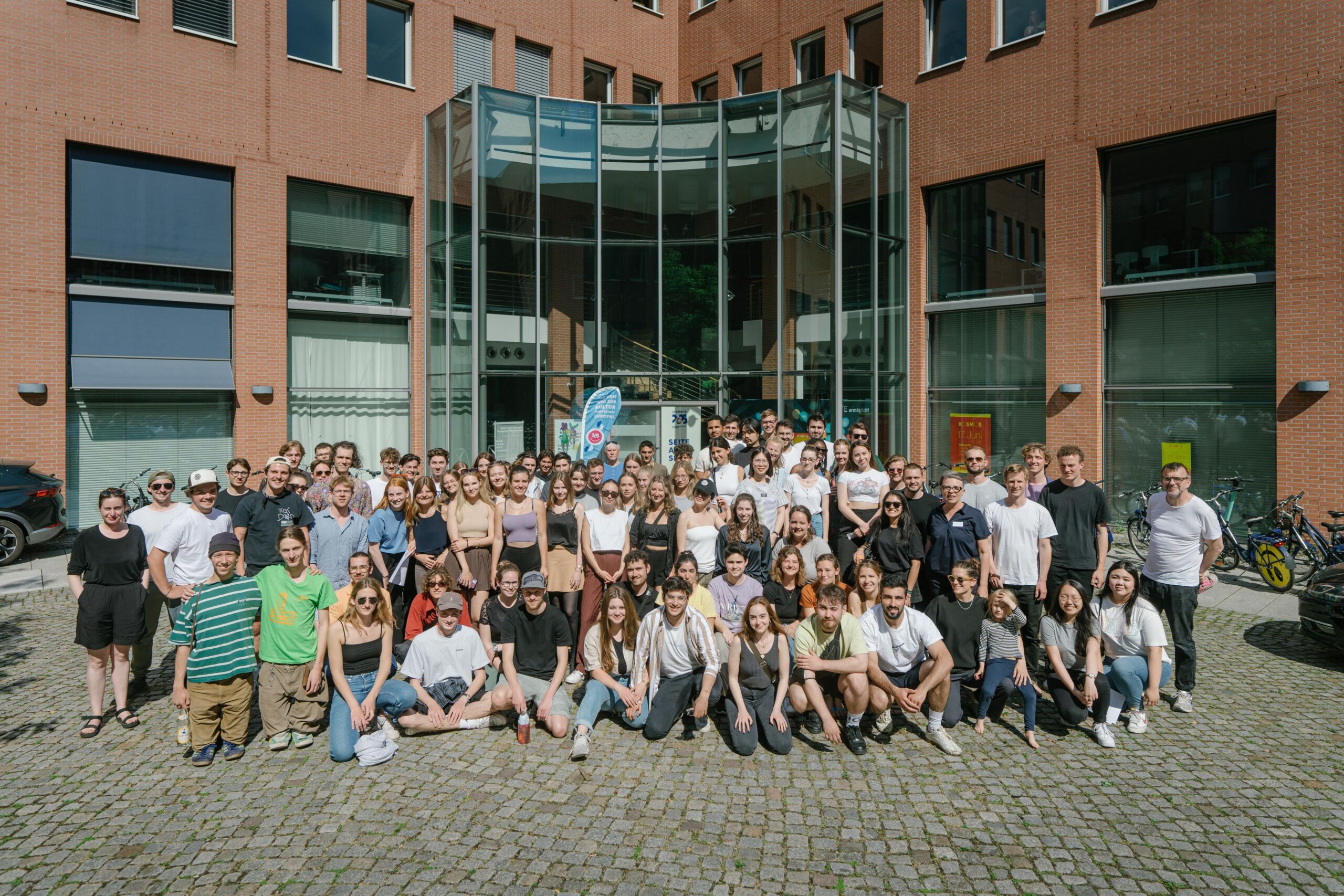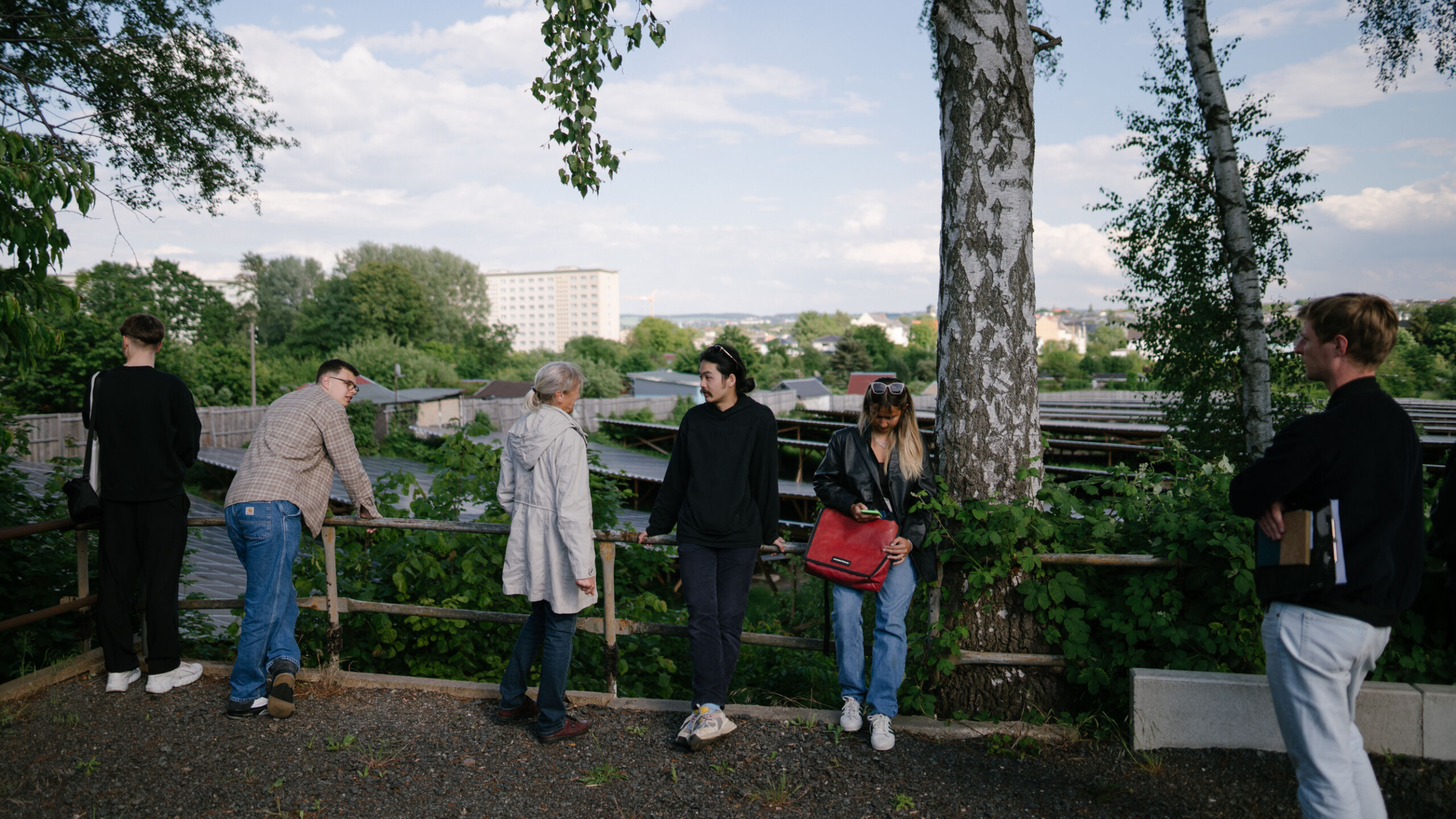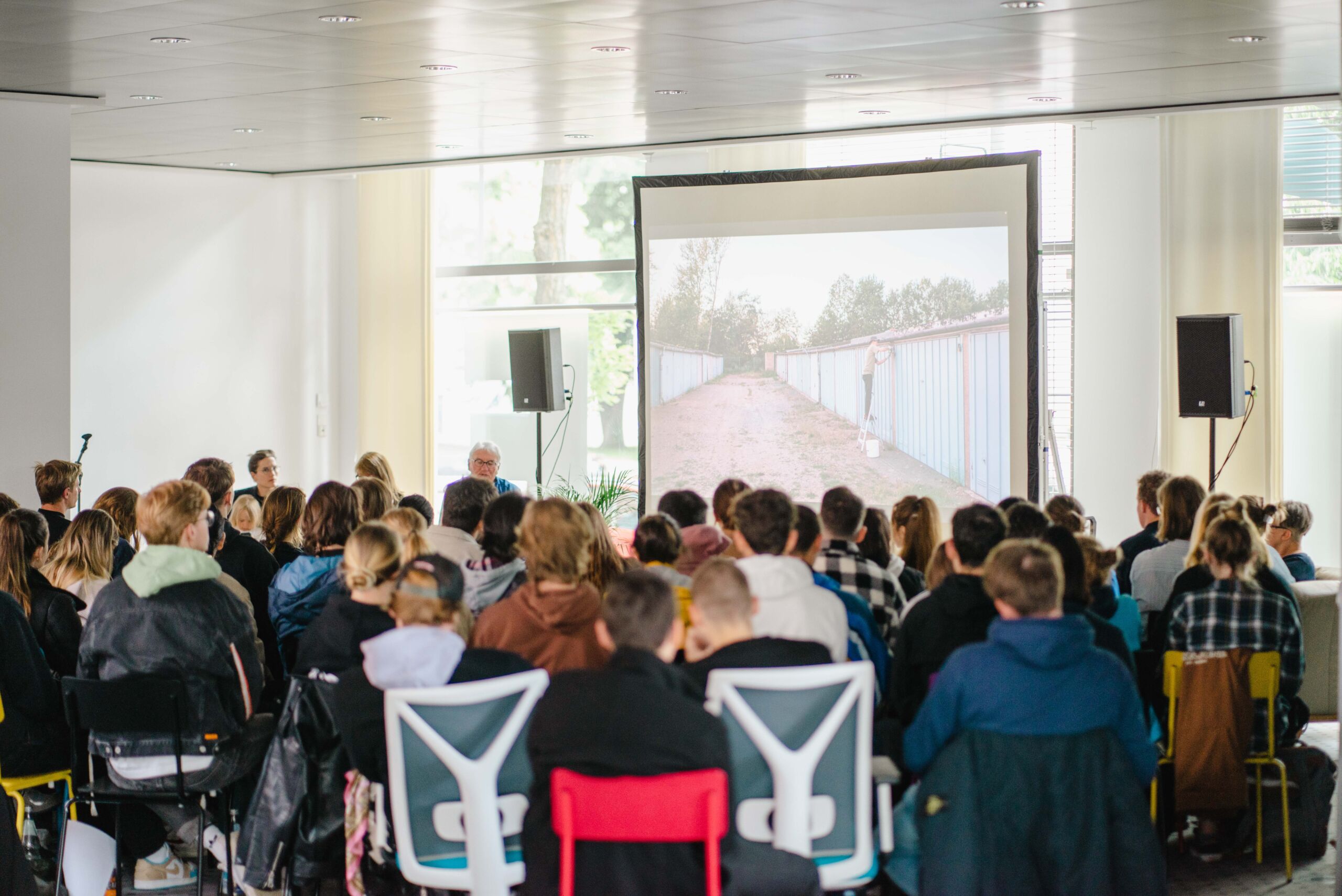Our Bid Book for the European Capital of Culture outlined a large number of projects that will be implemented by 2025. These include the #3000Garages project. Before the project officially starts next year, the European Capital of Culture team would like to learn more about the Chemnitz garages as part of a scientific mapping project in cooperation with Munich University of Applied Sciences.
Chemnitz Garages - Open your eyes!
They are 3m x 6m x 2.80m stuck together in single or double rows, and many are grouped together in larger complexes. Some are built of corrugated iron, others of concrete slabs: garages. In all districts of the city of Chemnitz together, there are estimated 30,000 garages. Many of them are simply used to park cars, while others are used for tinkering, hobbies, neighborhood chats or barbecues.
The garage complexes described are still part of the public space of the centers and peripheries, especially in eastern German cities. Originally created in this form in the post-Soviet states, garage yards still stretch across many cities in Europe today. They were once built communally and have long functioned as places of social encounter. Start-ups and crazy ideas were born in garages, and numerous bands originated here.
The project #3000Garages understands garage yards not only as parking spaces for a car, but as community places, creative labs, open spaces, cultural assets and spaces for urban development. Together with Chemnitzer:innen, it wants to make visible the personal and collective stories that exist around the garages and the people who use them.
Are you interested in the project, want to find out more or get involved yourself? With pleasure! Contact us by:
E-Mail: 3000garagen@chemnitz2025.de
Postal address: Kulturhauptstadt Europas Chemnitz 2025 GmbH, Moritzstraße 20, 09111 Chemnitz
The Flagship project is conceived and supervised by:
- Agnieszka Kubicka-Dzieduszycka
agnieszka.kubicka@chemnitz2025gmbh.de - Ann-Kathrin Ntokalou
ann-kathrin.ntokalou@chemnitz2025gmbh.de
As a team member, Benjamin Gruner significantly contributed to building the foundations of the project in 2022-2023.

What comes about when 110 architecture students from Munich visit Chemnitz for the first time and spend five days taking a close look at garage yards there? This much is certain: A lot. With clipboards, data entry sheets, name tags and 3D apps on their smart phones, they set out for the week of May 30 to June 3, 2022, under the direction of Prof. Dr. des. Luise Rellensmann and Dipl.-Ing. Architect Jens Casper, to visit over 150 Chemnitz garage facilities.
On site, the task was to map rows of garages, to record tthe various ypes and building fabric, and to discover and document architectural features. Whether in small complexes of five or six garages to the city’s largest yards, which hold more than 1,000 individual garages, the students got to know a variety of people and their stories in addition to the diversity of architectural construction. What in some cases began with initial skepticism or rejection, not infrequently ended in direct exchange to the point of opening the garage door and hearing the personal story behind it. These individual stories, as well as the architectural findings, 3D scans, video and sound recordings will be part of the upcoming projects within the Capital of Culture project #3000 Garages, which will be developed in the further course of the preparations together with artists, committed and interested people as well as Chemnitz cultural institutions.
At the end of the project week, the 55 groups of two each presented a short concise experience from their work in front of their fellow students and their new acquaintances from the garage yards and underlined it with a singe photo, video or audio recording. In the next step, the entire material will be viewed and evaluated during the current semester and processed together with the Capital of Culture team as a basis for further garage projects in Chemnitz.
The student surveying project was led by Prof. Dr. des. Luise Rellensmann (Munich University of Applied Sciences) and Dipl.-Ing. Architect Jens Kasper and was carried out with the support of architects Jonathan Banz (Munich University of Applied Sciences / jbks.ch) and Kristof Schüßler (Munich University of Applied Sciences / jbks.ch) as well as Lukas Strasser (Munich University of Applied Sciences).
Parallel to the mapping of the garages by students of the Munich University of Applied Sciences, another research measure took place during the project week. In the context of cultural management, Benjamin Gruner, a student at the International University in Dresden, carried out observations for his master’s thesis, which examines the potential of Chemnitz garages as places for cultural and social activities.
Questions?
Why is the Capital of Culture interested in Chemnitz garages?
Culture begins where people shape their environment together and create the foundations for peaceful creative coexistence through supposedly banal customs. Garage yards are such places – places of community, tinkering and repairing.
What is the project supposed to convey or achieve?
#3000Garages aims to bring garages to the centre of attention as spaces worthy of preservation with enormous social potential. It aims to bring people together, to shed light on the social and personal significance of garages and to make creative practices in garage yards visible.
What is to happen in the garages and when?
In spring 2023, #3000Garages will start planning discussions and conversations with the garage users, joint work and handicrafts, festivals, flea markets, bicycle tours, film screenings, gardening, art projects and much more.
Where do the interests of the garage users come into play?
From the beginning to the implementation of the projects! Because without the interest and commitment from the garage yards, nothing can happen. The project is geared towards active participation. Let’s discuss ideas together!
Who organises the projects in the courtyards and who implements them?
The Kulturhauptstadt GmbH organises the projects in the courtyards and then implements them together with interested parties and garage users.
How can I participate in the project as an artist?
Cultural formats of different shapes and sizes will be realised until 2025. If you have ideas or are just interested in the project, please contact us directly at 3000garagen@chemnitz2025.de.
How can I stay up to date?
We currently share all the news via the Capital of Culture newsletter, to which you can subscribe via the website www.chemnitz2025.de.
What happens after 2025?
Maybe the project has whetted your appetite for cultural projects in the courtyards after 2025, or you are cultivating a community garden with your garage neighbours. #3000Garages wants to initiate and promote long-term changes and interpersonal connections.
Further links
Do you feel like learning more about garages? Then check out these links:
- Yefimkina, Natalija: Garagenvolk, documentary film, Germany 2020
(link to the trailer) - Söder, Siegfried: Memories on 8 mm (Digitized Super 8 film), 2009
(link to the video) - Polt, Gerhard: The Garage, radio play, Germany 2000
- Ryazanov, Eldar: The Garage (Гapaж), feature film, USSR 1980
(link to the film)








Get Social